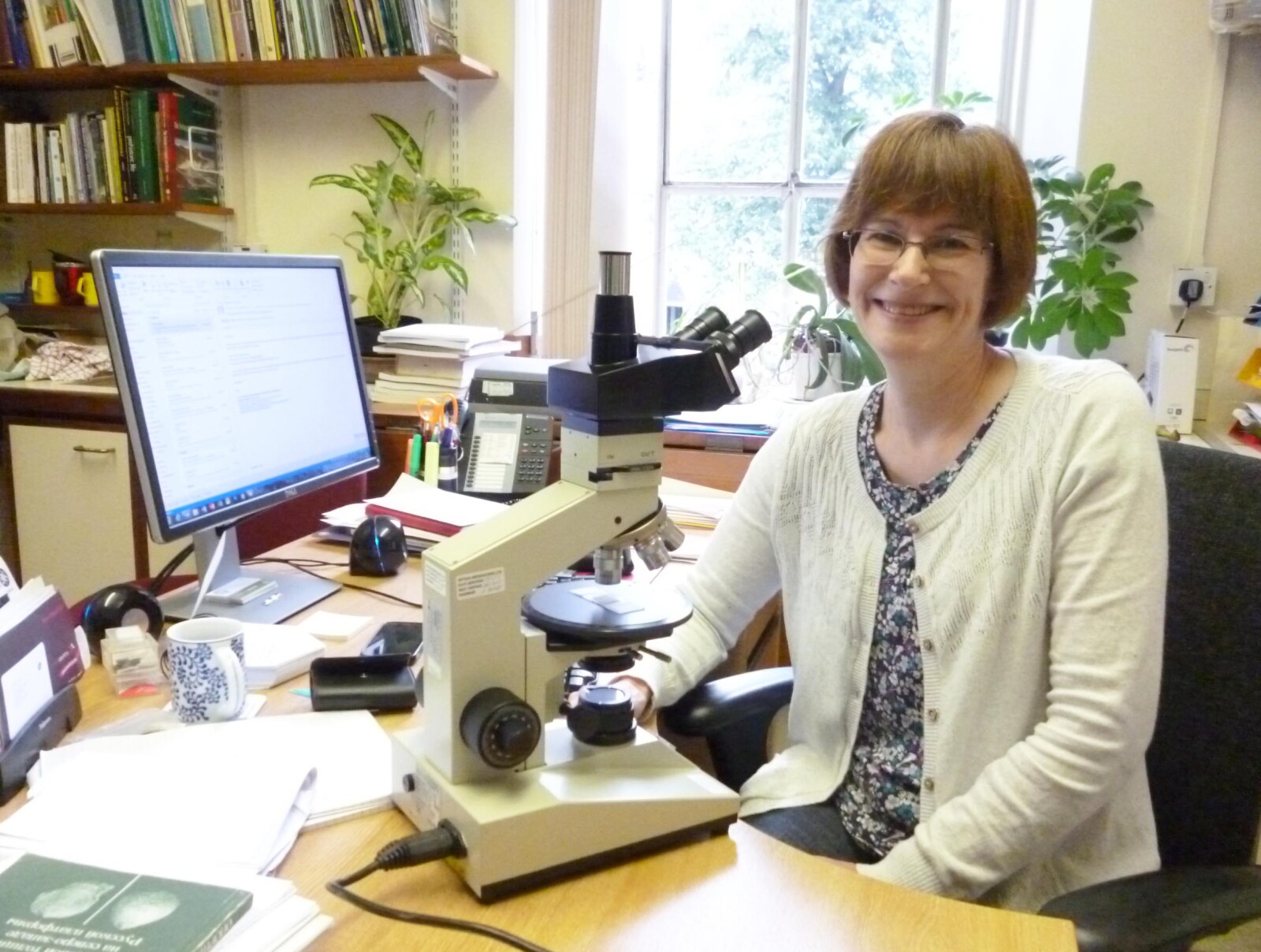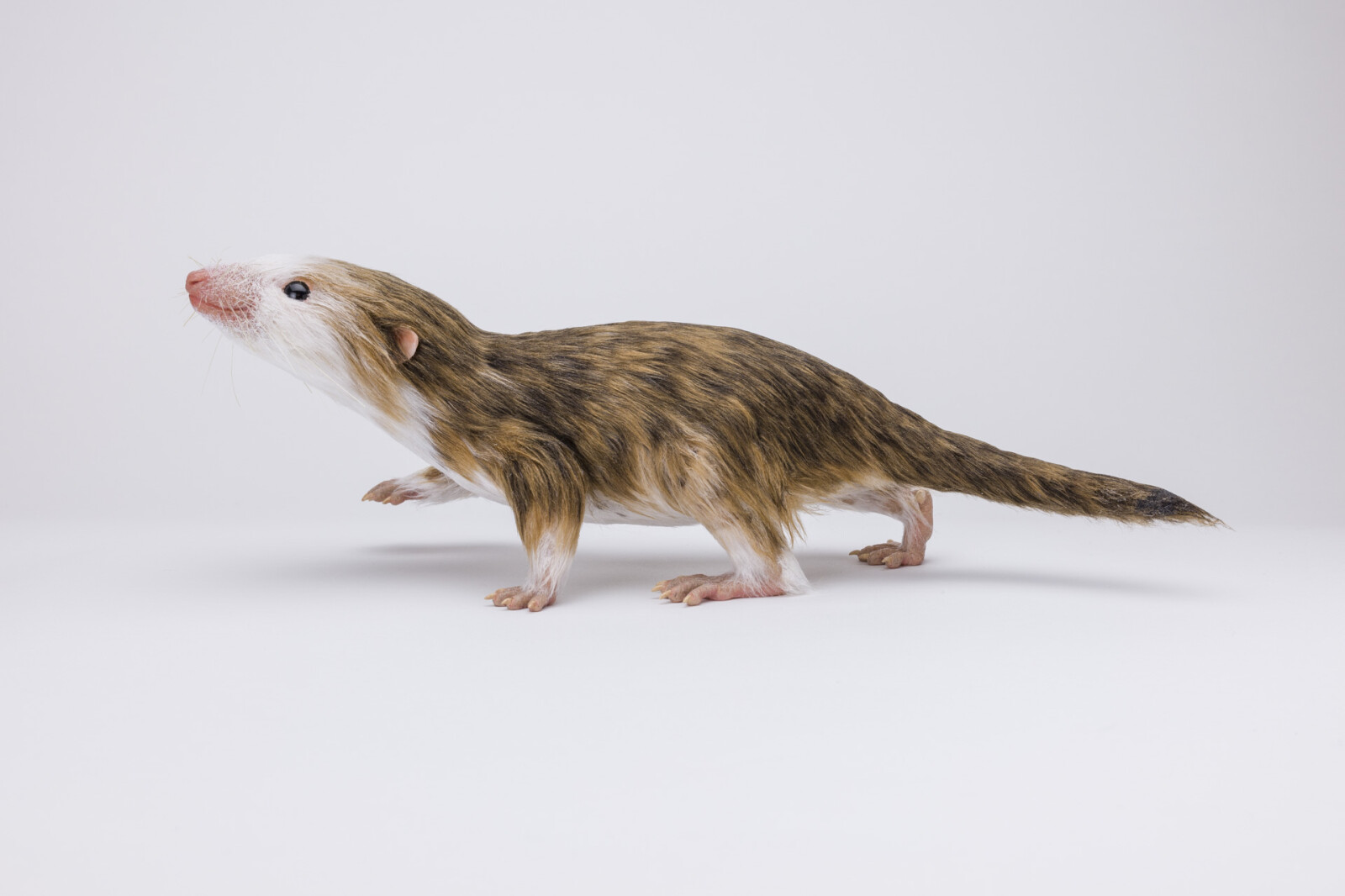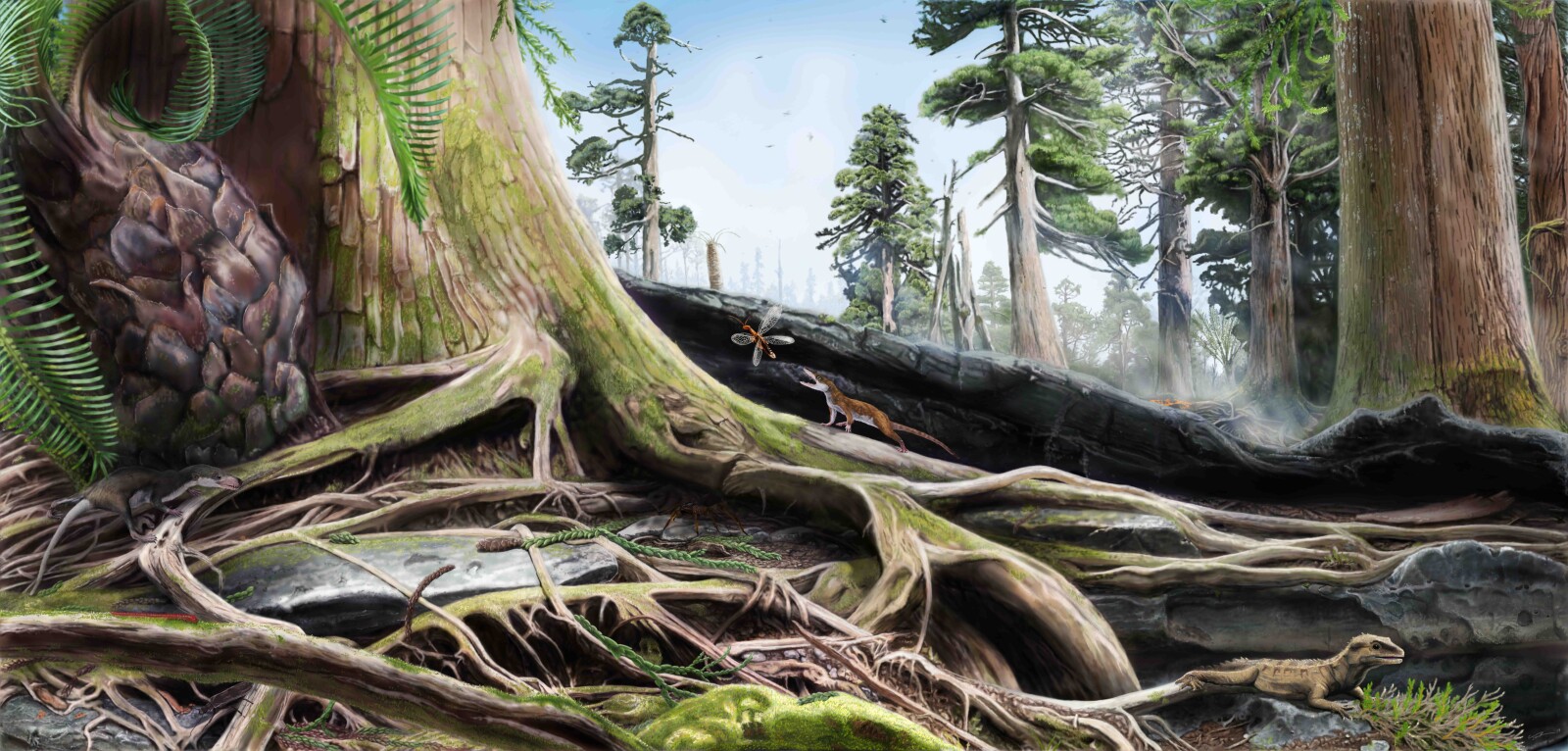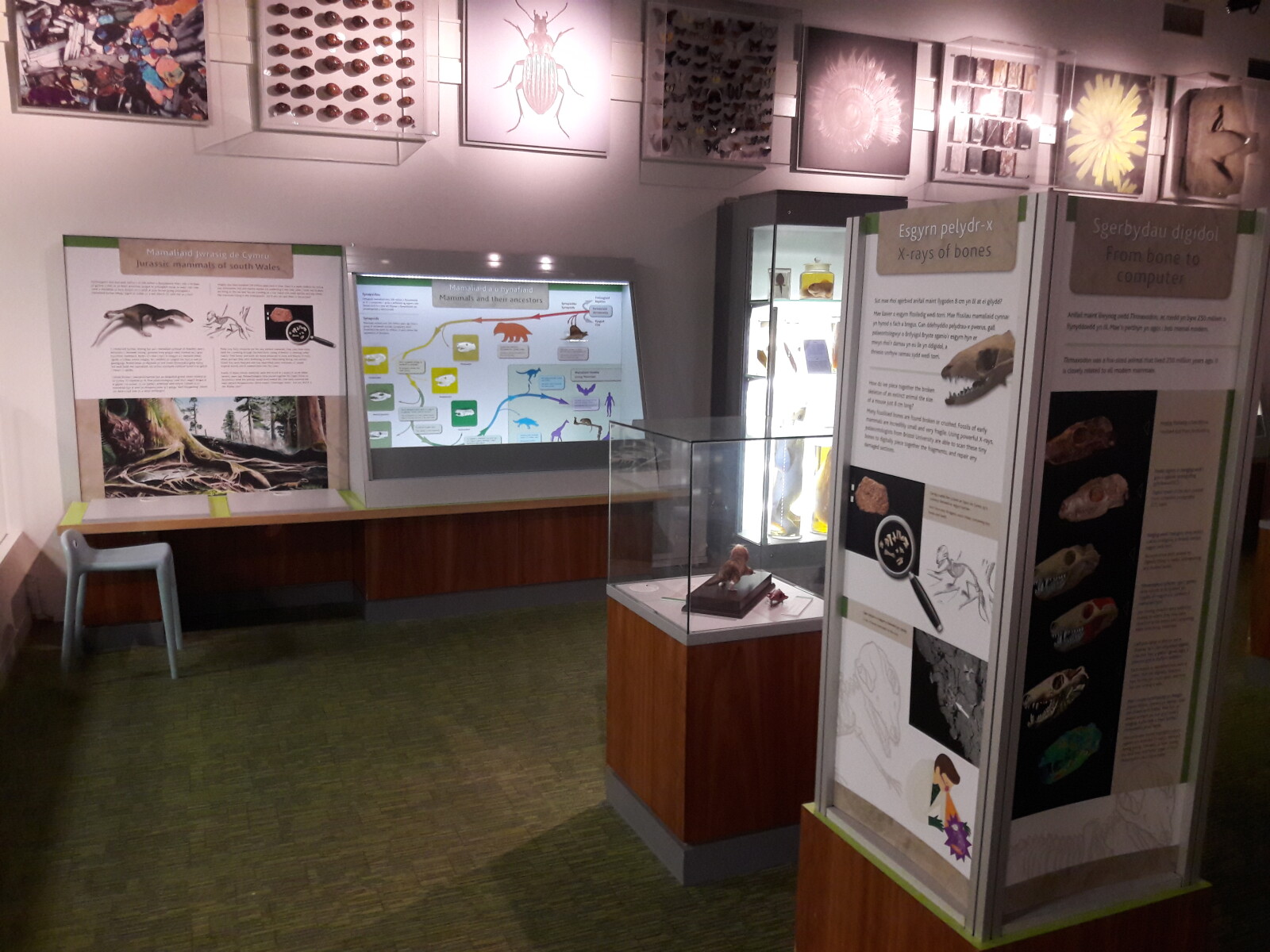Meet Morgie!
, 26 January 2018
The discovery of the Welsh dinosaur Dracoraptor showed us that dinosaurs lived in the Jurassic of south Wales 200 million years ago. However if you went back to that time you would also have seen little shrew-like mammals hiding in the undergrowth, these are the very earliest mammals.
The bones and teeth of these tiny, furry creatures are preserved in caves and fissures in rocks, where perhaps they were sheltering, or even hibernating during cold winters. Fossils of these minute mammals were first found in a quarry in south Wales seventy years ago. Palaeontologists have pieced together the fragile bones to reconstruct what the animals would have looked like. One early mammal has been named Morganucodon which means "Glamorgan tooth”
New research undertaken at Bristol University, funded by the Natural Environmental Research Council, used powerful X-rays to scan these tiny bones making it possible to piece together the fragments digitally. Then, using modern mammals as a guide, palaeontologists digitally recreated muscles on scanned images of the skeleton. Bristol scientists used computer simulations to work out how a skeleton worked. By looking at their teeth they could tell that some early mammals were able to crunch insects with hard wing cases, while others could only bite softer ones.
We have a new display in our Insight gallery highlighting this research which includes an amazing model of Morganucodon, made by palaeoartist Bob Nicholls. It looks unbelievably lifelike and answers to the name Morgie!



